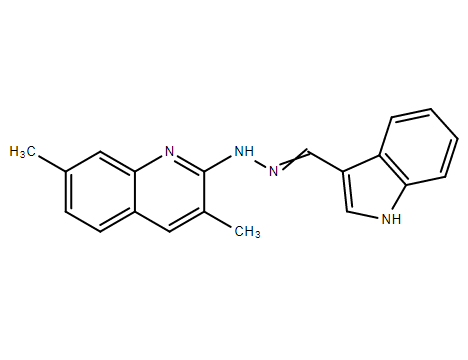| Cas No.: | |
| Chemical Name: | Endosidin5(ES5) |
| Synonyms: | Endosidin5(ES5),ES-5, ES 5,Endosidin 5,Endosidin-5 |
| Formula: | C20H18N4 |
| M.Wt: | 314 |
| Purity: | 98% |
| Sotrage: | 2 years -20°C Powder, 2 weeks 4°C in DMSO, 6 months -80°C in DMSO |
| Publication: | Targeting Recycling Endosomes to Potentiate mRNA Lipid Nanoparticles-Nano Lett. 2024 May 1;24(17):5104-5109. doi: 10.1021/acs.nanolett.3c04415. Epub 2024 Apr 19. |
| Description: | Endosidine 5 (ES5), is one of the most potent small molecules interferes with recycling endosomes through Annexin A6, thereby promoting the release and expression of mRNA into the cytoplasm. The delivered mRNAs is greatly enhanced via inhibition of endocytic recycling in cells and in live mice. NAV2729 (NAV) and endosidin 5 (ES5), resulted in significant enhancement (1.5–2 folds) of LNP-mediated delivery of Fluc mRNAs. Incubation of NAV and ES5 together caused modest further increases in Fluc expression in comparison to the sole application of either compound. |
| References: | Targeting Recycling Endosomes to Potentiate mRNA Lipid Nanoparticles-Nano Lett. 2024 May 1;24(17):5104-5109. doi: 10.1021/acs.nanolett.3c04415. Epub 2024 Apr 19. |

 DC Chemicals' products qualify for U.S. tariff exemptions. We guarantee no price increases due to customs duties and maintain stable supply, continuing to deliver reliable research solutions to our American clients.
DC Chemicals' products qualify for U.S. tariff exemptions. We guarantee no price increases due to customs duties and maintain stable supply, continuing to deliver reliable research solutions to our American clients.





















